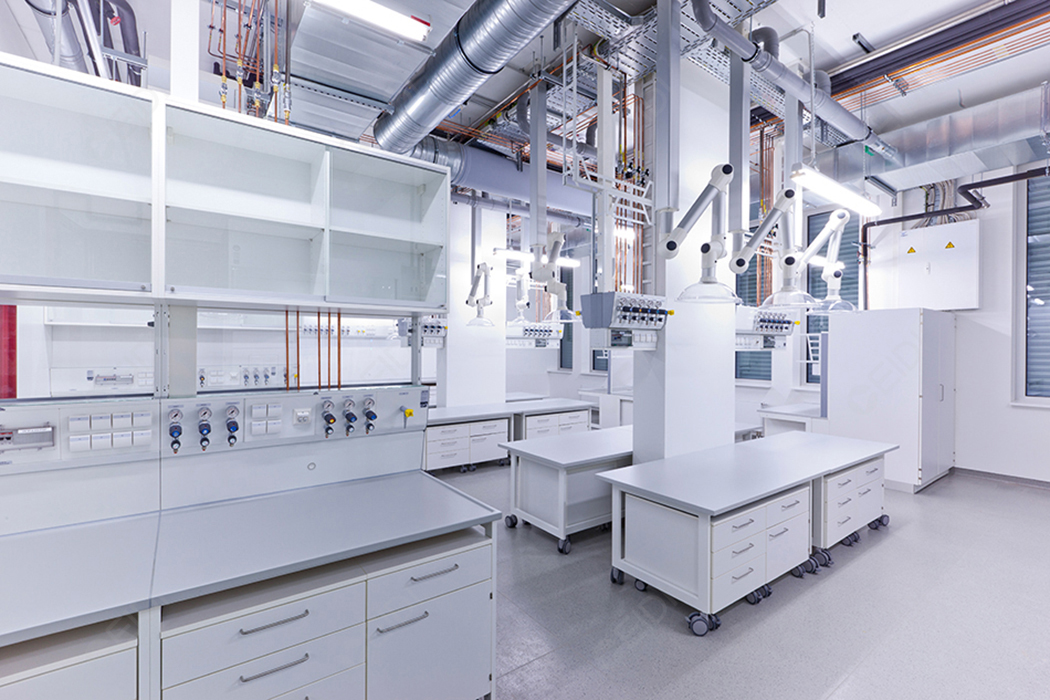Welcome to the official website of Xidi laboratory, the laboratory design and decoration recognize Xidi!
|
|
Home >> News >> Technology
文章出处:Technology|阅读量:915|发表时间:2021-02-25
In the medical world, hematological tumors are a class of highly heterogeneous diseases, and their diagnosis and treatment require a comprehensive analysis of morphology, immunology, genetics and molecular biology. Common molecular biology abnormalities in hematological tumors mainly include gene mutations, fusion genes and abnormal gene expression. At present, NGS is the most widely used and mature in the detection of gene mutations. CEIDI Xidi only deals with the detection of gene mutations in this article.
The second-generation sequencing NGS laboratory is a laboratory for genetic testing (high-throughput sequencing detection). The focus of the construction of the second-generation sequencing NGS laboratory is mainly in the design of layout partitions, structural materials, air pressure adjustment, disinfection, and lighting. , Several aspects of the transfer window.

I.The design layout of the first and second-generation sequencing NGS laboratories
The design of the second-generation sequencing NGS laboratory is divided into four areas, namely: reagent preparation area, specimen and library preparation area, library amplification and detection area, and sequencing area.
1. Reagent preparation area
The regional functions and equipment of the reagent preparation area of the NGS laboratory are as follows:
(1) Regional function: used for the preparation, distribution and storage of reagents required for experimental projects.
(2) Equipment: It must be equipped with a sampler, refrigerator, analytical balance, micro-table centrifuge, vortex oscillator, pipette, movable UV lamp, ultra-clean bench and other equipment.
II. Specimen and library preparation area
The regional functions and equipment of the specimen and library preparation area of the NGS laboratory are as follows:
(1) Regional functions: used for blood processing, plasma preparation, DNA extraction, DNA fragmentation, DNA sample purification, DNA concentration detection, end repair, adapter connection, and sample sequencing library construction.
(2) Equipment equipment: it must be equipped with a refrigerated centrifuge, a micro benchtop centrifuge, a handheld three-tube centrifuge, a vortex shaker, a vertical mixer, a pipette, a movable UV lamp, a biological safety cabinet, a refrigerator, a tray balance, Qubit 2.0 nucleic acid quantifier, computer (connected to the Internet), barcode printer, ordinary printer, scanner, magnetic stand and other equipment.
III. Library amplification and detection area
The regional functions and equipment of the library amplification and detection area of NGS laboratory are as follows:
(1) Regional function: used for PCR amplification and purification after library construction, library concentration detection, library mixing and quality inspection analysis after mixing.
(2) Equipment equipment: must be equipped with PCR instrument, QPCR instrument, Qubit2.0 nucleic acid quantifier, movable UV lamp, ultra-clean workbench, refrigerator, micro bench centrifuge, vortex oscillator, UPS, refrigerator, pipette , Magnetic stand and other equipment.
IV. Sequencing area
The regional functions and equipment of the sequencing area of the NGS laboratory are as follows:
(1) Regional function: used for sequencing template preparation, such as emulsion PCR and magnetic bead enrichment recovery, as well as on-machine sequencing, data analysis, report review and distribution.
(2) Equipment equipment: must be equipped with high-throughput sequencer, PC computer, printer, UPS, constant temperature metal bath, pure water meter, refrigerator, micro benchtop centrifuge, vortex oscillator, pipette, ultra-clean bench, Movable UV lamp, magnetic stand, PCR instrument and other equipment.
2. The main structural materials of the NGS laboratory for next-generation sequencing
The design and decoration of the second-generation sequencing NGS laboratory should use color steel plates and aluminum alloy materials as the main building materials. The internal corners and external corners of the interior are made of aluminum alloy 50 internal round aluminum. The advantage of this is that the internal structure is firm, the sealing is good, and it is not easy. Pollution and dust accumulation.
3. Air pressure adjustment in NGS laboratory for next-generation sequencing
Regarding air pressure adjustment in the second-generation sequencing NGS laboratory, a return air vent with adjustable air volume should be installed on the outer wall and each door of the experimental area, and air is ventilated into the room through the return air vent.
4. Disinfection and lighting of NGS laboratory for next-generation sequencing
In terms of disinfection, the experimental area, the top of the buffer zone, and the inside of the transmission window of the NGS laboratory of the second-generation sequencing should be equipped with ultraviolet lamps for disinfection. If you want to perform partial disinfection of the laboratory table, you must also be equipped with a mobile UV lamp; in terms of lighting, the lighting equipment must be dust-free and easy to clean. Here,
CEIDI recommends to be equipped with purification lamps.
V. The delivery window of the next-generation sequencing NGS laboratory
The delivery window is divided into mechanical linkage type and electronic linkage type. It is recommended to equip the former in the design and decoration of the NGS laboratory of the second-generation sequencing to ensure that the samples and reagents will not be contaminated during the delivery process.
In summary, the overall design and requirements of NGS testing laboratories should refer to industry documents and requirements such as "Guidelines for the Construction of Molecular Pathology Diagnostic Laboratories (Trial)", "Guidelines for the Work of Clinical Gene Amplification Testing Laboratories in Medical Institutions". The inspectors, biological information analysts, report analysts, and consultants shall have corresponding professional backgrounds and have received corresponding training to obtain job qualifications. The laboratory area setting and environment need to meet the requirements of experimental links and instruments. NGS testing reagents and sequencing platforms should first choose products approved by CFDA. Involving laboratory self-prepared reagents, probes, etc., there should be strict reagent preparation standard operating procedures (SOP), and the clinical laboratory self-built project (LDT) can be used after verification.